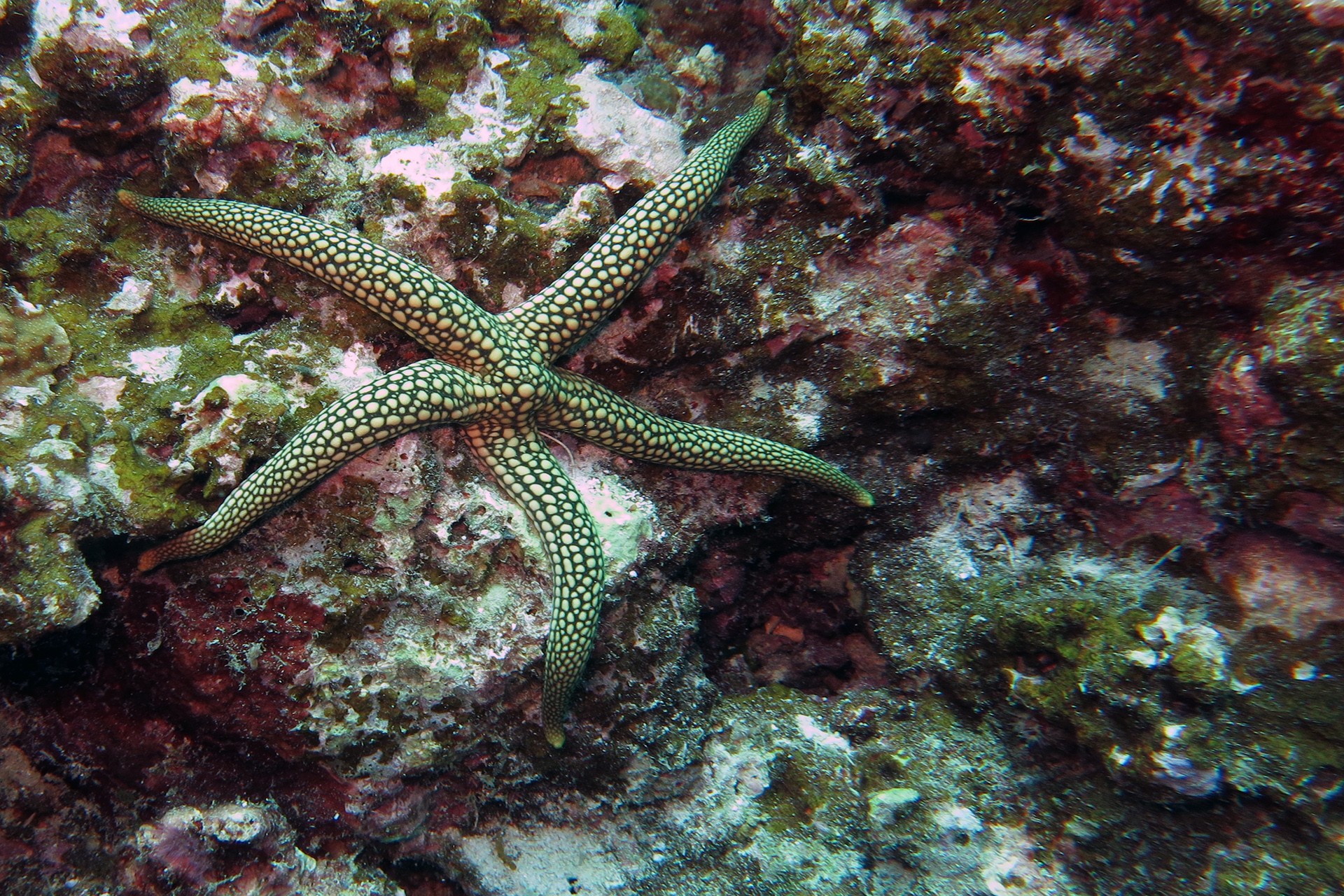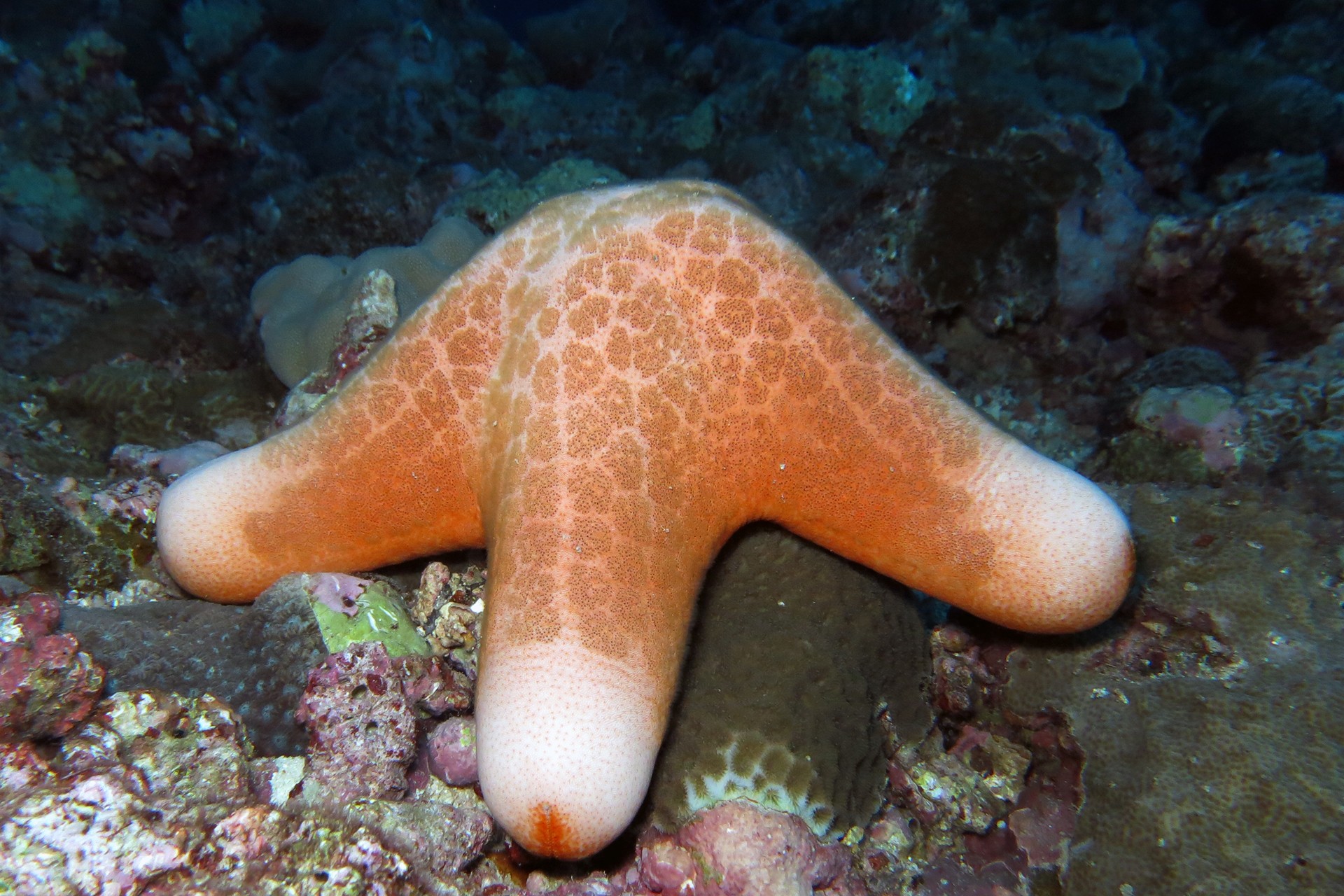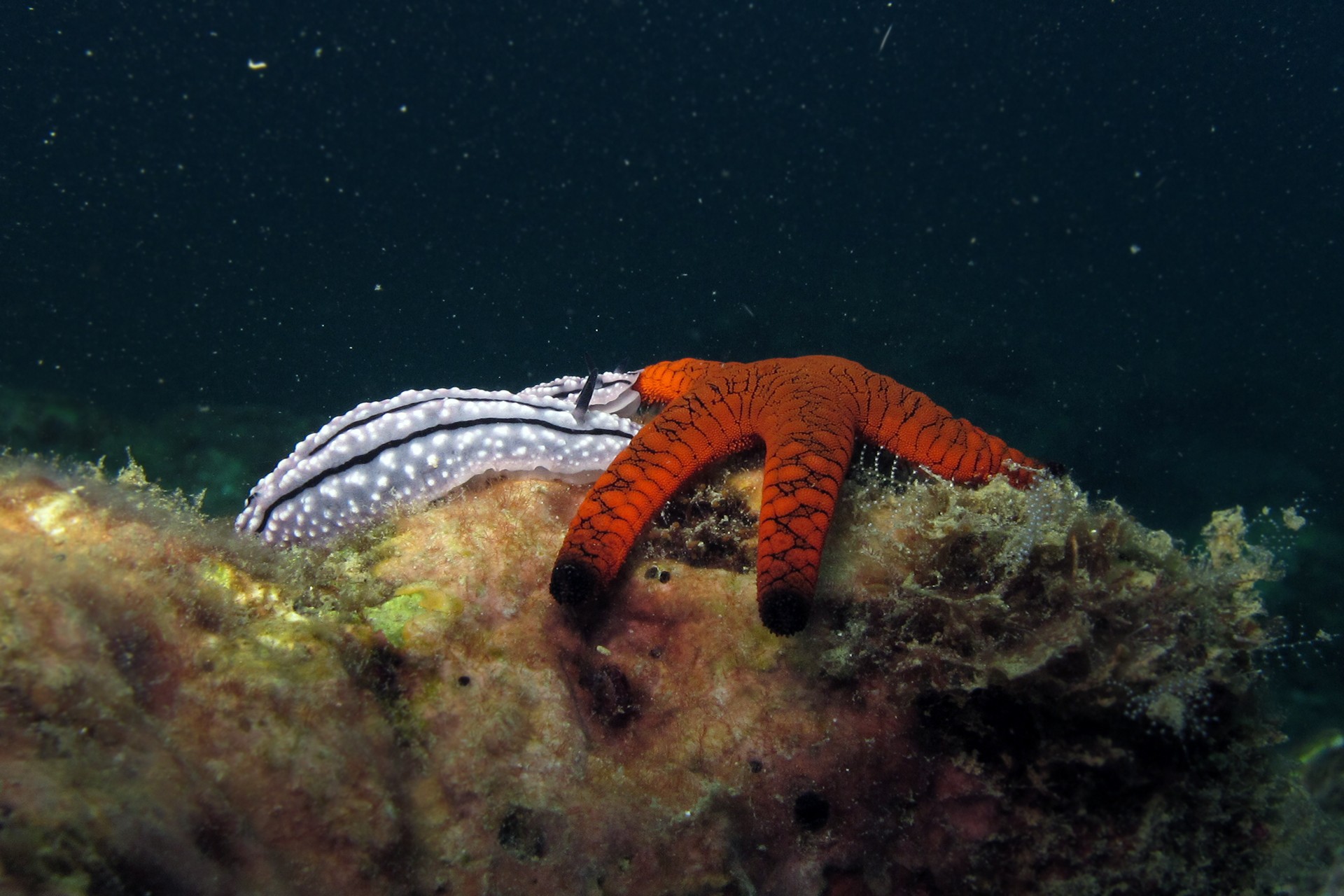Just like there are stars in the sky, there are stars in the sea too. They even belong to the taxonomic class Asteroidea. We call them starfish.
Starfish, also known as sea stars, are not even remotely related to fish. Unlike fish, which have a symmetrical left and right side, sea stars have radial symmetry, which means they diverge from a common centre, and their bodies are formed around a central disk, with arms radiating outward.
Have you ever seen one up close? The next time you are near the sea, explore the sandy beaches, or the nooks and crevices of rock pools, or, when you dive underwater, look closely within a coral reef ecosystem.
I first saw a sea star when I was five. I was on a summer holiday with my parents. There were countless animals on the beach, all with different names, forms and sizes, but what caught my attention were the sea stars. Their distinct, unusual shape, the way they flipped themselves over and burrowed quickly into the sand making themselves invisible – I was immediately fascinated. As a young boy, I could not figure out where their mouth or eyes were. Or why they have five arms when we have only two.
Years later, when I began to study marine biology, I got answers to many of my questions. I learned that though most sea stars have five arms, a few, such as brittle stars and feather stars have as many as 10, 20, and 40 arms. The cushion star looks less like a starfish and more like a pillow! You might have thought that sea stars use their arms to move – actually, they use tube feet (the numerous little feet on their undersides) to help them go from one place to another.
Many coastal animals, including fish, sea turtles, snails, crabs, shrimp, otters, birds, feed on sea stars. Predators with big mouths such as gulls can eat them whole – they aren’t bothered by the sea star’s hard and bumpy skin. Predators with smaller mouths, such as snails and crabs, flip the sea star over and eat its soft tube feet, stomach and other body parts. But, if any of these predators manages to take a bite of their arm, it isn’t a big deal – sea stars’ arms can regenerate! As long as the central disk is still present, it doesn’t take them long to grow back their arms. Isn’t that cool? Only a few animals have this remarkable ability to regenerate their lost body parts – lizards can get new tails if they lose their old ones, feeder crabs can replace their claws, and flat worms can regenerate their bodies! Perhaps that’s why sea stars have done remarkably well in all the world’s oceans, with close to 2,000 species spread from the tropics to the poles.
Sea stars have been around before dinosaurs roamed the earth, but how long they will continue to thrive is difficult to say. They are sensitive to marine pollution (that’s why scientists like me consider them to be good indicators of the health of a marine ecosystem). The increase in the frequency of natural catastrophes, the rise in ocean temperatures due to global climate change, and the discharge of wastewater into the sea have all destroyed their habitat in recent years. They have disappeared from many places, especially touristy places, as they often get picked up as souvenirs (so the next time you go on a beach holiday, remember to leave the sea stars where you find them!).
Sea stars are not without their own tactics for survival. They are slow-moving marine animals, so the ability to be camouflaged in their environment is extremely important to them. If you ever go diving or snorkelling, look closely at the coral reef ecosystem. There you will find some sea stars that are well camouflaged, such as the Common Sea Star, pretending to be part of the landscape and avoiding its predators. Other sea stars choose to stand out in striking colours instead, their bright appearance acting as a warning signal to predators. Most brightly coloured sea stars, such as Linckia sp. are laced with dangerous toxins.
Another thing that helps sea stars guard against predators is their well-adapted sensory system. Sea stars don’t see colours like us. They perceive light and dark, which enables them to track movements around them. These light-sensing eye spots are present at the tip of each arm and collectively, they provide a useful panoramic view of their surroundings. They also helps sea stars find their prey, which consists of bits of shells, barnacles and dead or decomposing organic matter.
Some sea stars, however beautiful, can be pretty ruthless. Besides eating shells, they eat the entire colony of a coral. One such notorious sea star is the Crown-of-Thorns sea star (Acanthaster planci), which feasts on coral polyps by wrapping its arms around the coral, and using its sticky tube feet to consume coral polyps. Population booms of these prickly stars can do serious harm to reef ecosystems, rendering the crown-of-thorns as a villain of the reef.
Though people have been documenting sea stars since the 1500s, there is a lot we still don’t know about them. Their shape and beauty is fascinating, certainly, but what makes them so intriguing to me is not what we know, but rather, all that is yet to be revealed.
Other stories in this Guest Editor package:
Guest Editor Diaries: Starry-Eyed About Ground Birds: Seven-year-old Anshul Vaidya assigns stories to the NiF team.
Trek Or Treat?: Editor Anshul Vaidya writes about his overnight trek to Harishchandragad, one of his favourite places to be.
Birds Of A Different Feather: Scientist P Jeganathan writes a letter explaining why ground birds prefer to feed and nest on the ground.
See, It’s A Sea Turtle! Also Starring Starfish: Bijal Vachharajani lets us in on a little tale that's all about beach creatures.







